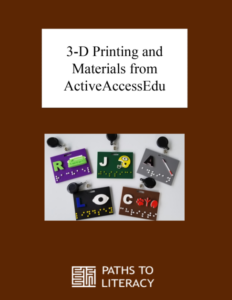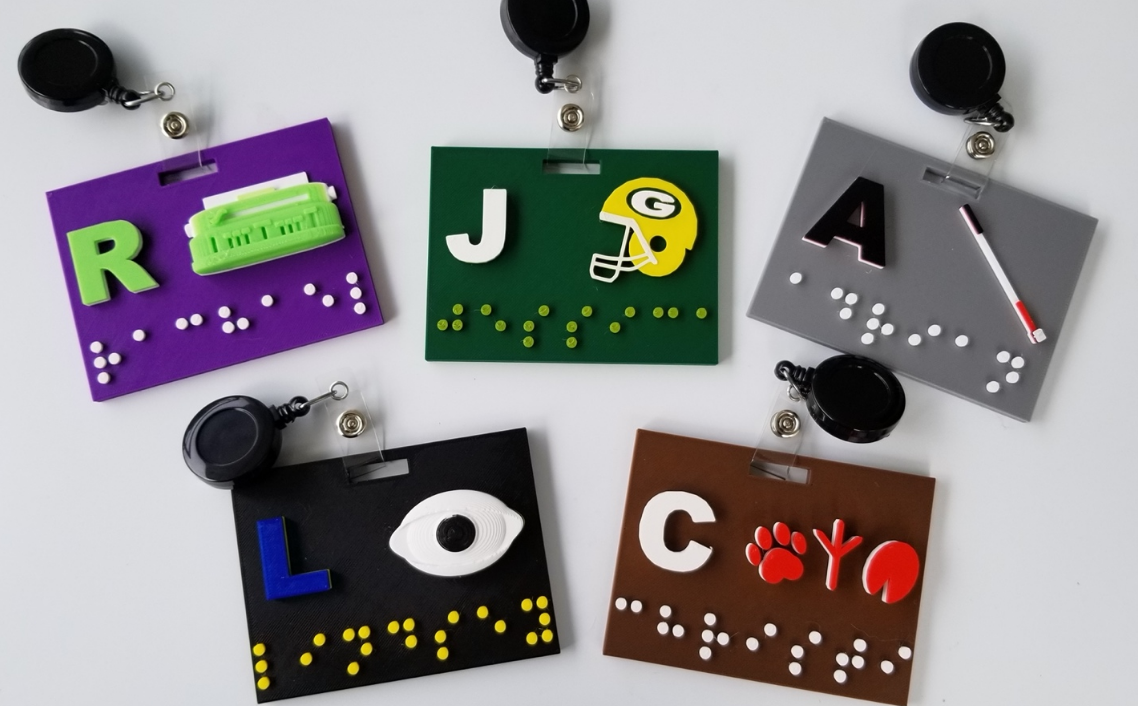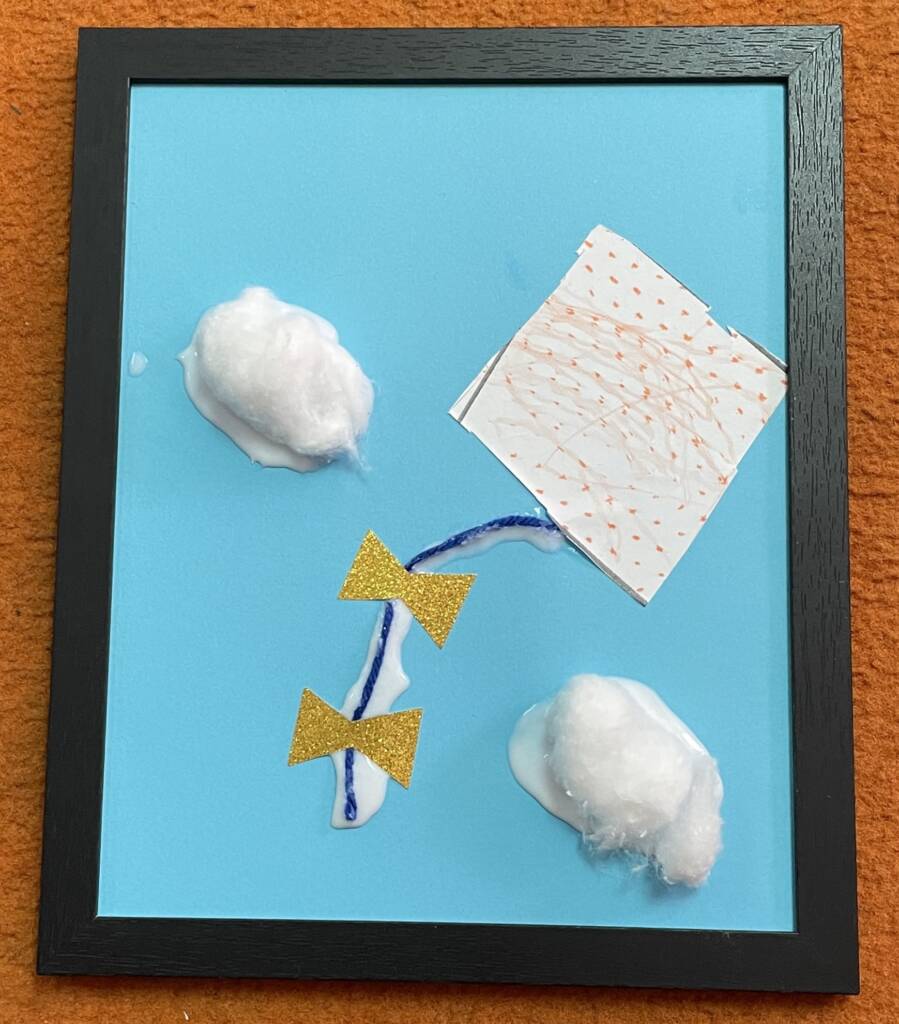Amanda Crayton is the owner and creator behind ActiveAccessEdu LLC (AAE). She spent ten years in a special education school serving students with complex and multiple disabilities. She worked both as a credentialed intervener and then as a classroom teacher. As a teacher, she opened a classroom designed around the educational needs of students with multiple disabilities plus vision and/or hearing loss and mentored staff through intervener certification. Amanda began ActiveAccessEdu in 2021 and began working on her State DeafBlind Project in 2022.
ActiveAccessEdu started as making materials for Amanda’s own classroom, and most products evolved from those materials – including tactile name badges, board games, learning/play frames, and tactile communication symbols.
Her students had very specific access needs that often masked their incredible capabilities. She found such power and empowerment in making and adapting materials for active engagement and access.
Amanda also saw firsthand how material adaptation is time-consuming. Teachers’ time is incredibly valuable and a precious commodity. She hopes her materials can alleviate some of that pressure while providing more access for students around her state, country, and even the world at this point! ActiveAccessEdu is still a small venture with lots of room for growth. At every step, Amanda tries to think about making accessibility truly accessible for as many as possible – meaning affordable, customizable, designed for many where possible, and individualized where needed.
It’s one of the big draws of 3D printing in her work – many of the products she has designed can be found as free files online for those who want to print themselves, and she frequently adjusts designs to match a child’s specific access needs such as: color, size, or complexity.
Learn/Play Frame
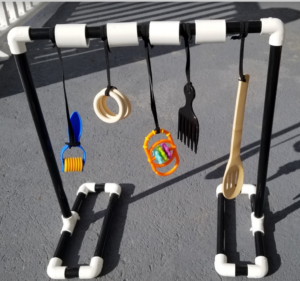
The Learn/Play Frame is designed for active engagement with objects and can be partially collapsed for storage and travel.
Board Games
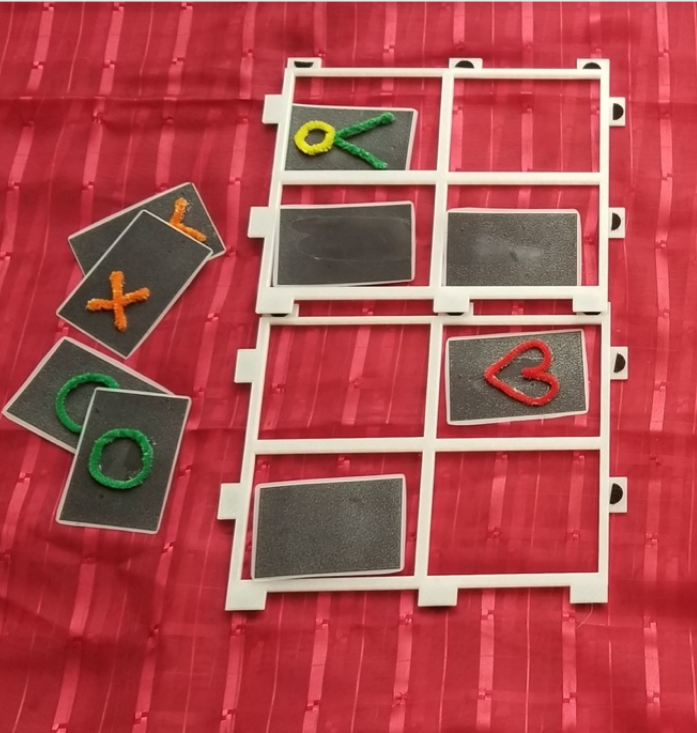
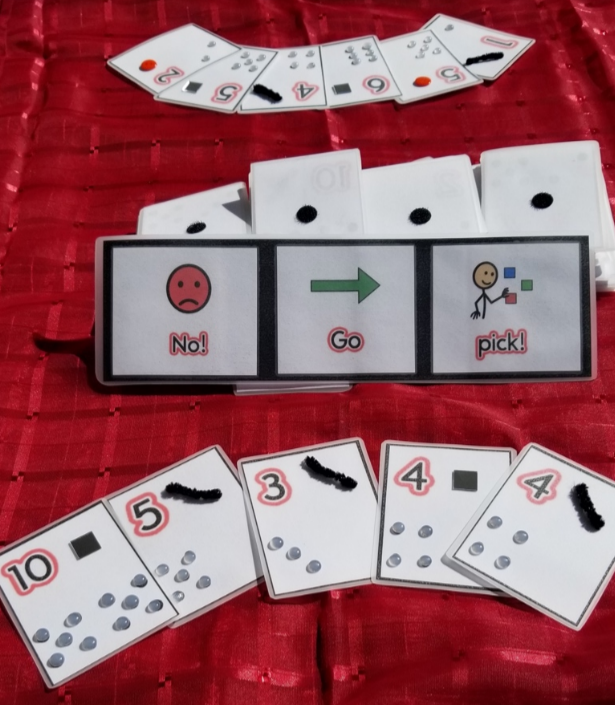
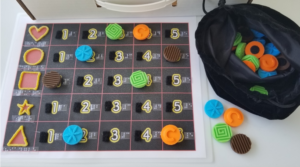
A selection of adapted board games: memory, go pick card game, and simplified Yahtzy. Each
has elements for tactile and/or low vision access.
Braille Badges
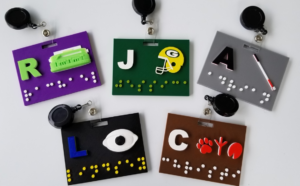
Each is 3D printed and has 3 main elements:
- Large, raised print letter
- Braille name
- Unique tactile illustration/symbol to represent the person (these are sometimes personal interests or objects related to an educators role)
Braille Play Dough Stampers
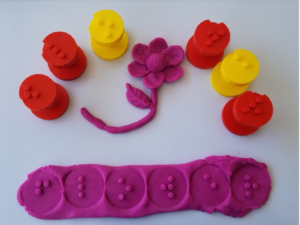
Play dough stampers feature a raised cell on top for identification of the letter, an indent at the top left to help with orientation, a space between the top label and the bottom stamping surface to provide holding options for varied motor skills, and an inverted cell on the bottom stamping surface to create raised dots in the play dough.
Tactile Communication Symbols
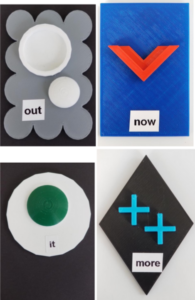
Each has a distinct base representing the type of word (scalloped gray for describing, blue rectangle for time, white circle for things, black diamond for expressions) and a raised graphic in a contrasting color. These symbols were developed first in Amanda’s classroom to build on communication for children who needed a static, tactile communication system and had developed symbolism through early and frequent use of concrete tactile and object symbols. Over several years, these students learned core vocabulary through aided language stimulation, hands-on learning activities, and embedding symbols in literacy. Abstract tactile symbols meet a very specific language need. Amanda has customized these symbols as requested for students’ access and expanding vocabulary, and happily works with families and educators on more individualized and concrete symbols for early and emergent communicators.
ActiveAccessEdu Products
Visit Designs on Thingiverse
AcctiveAccessEdu on Instagram
